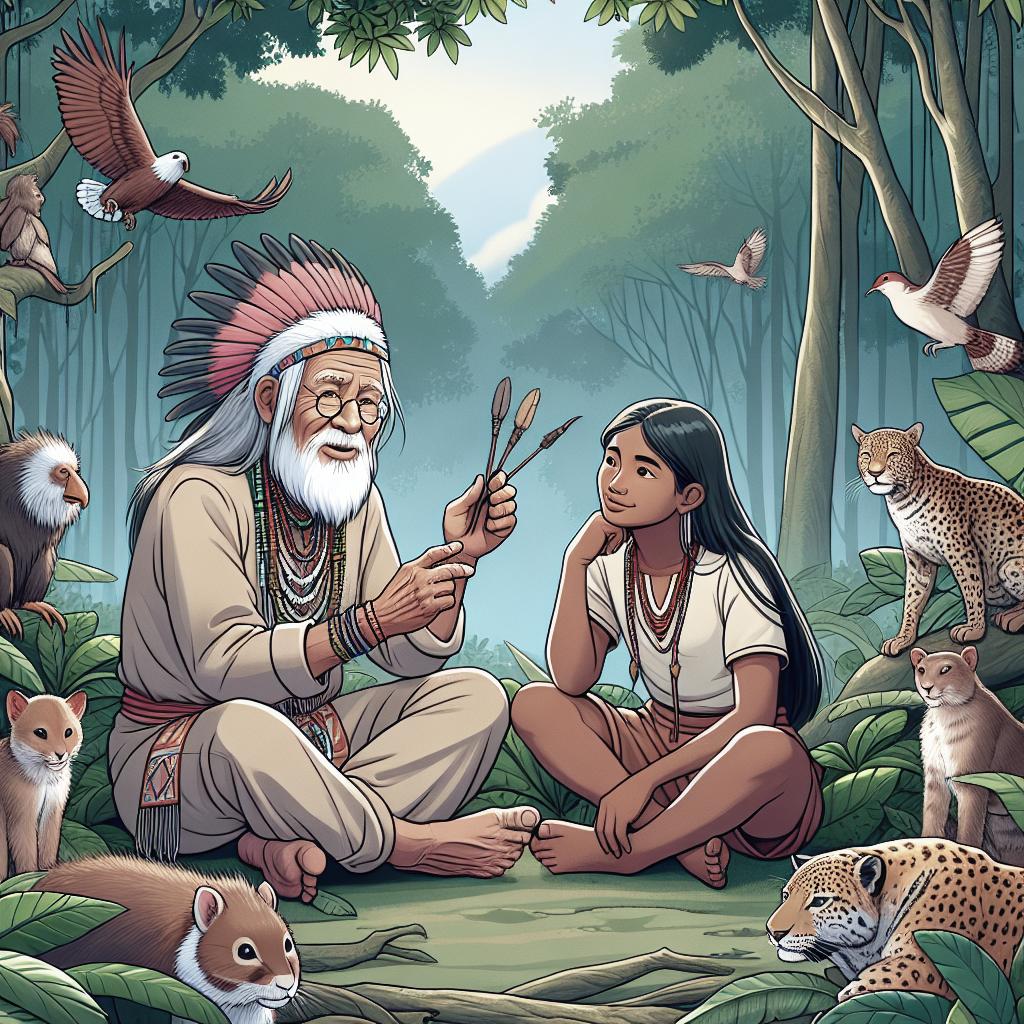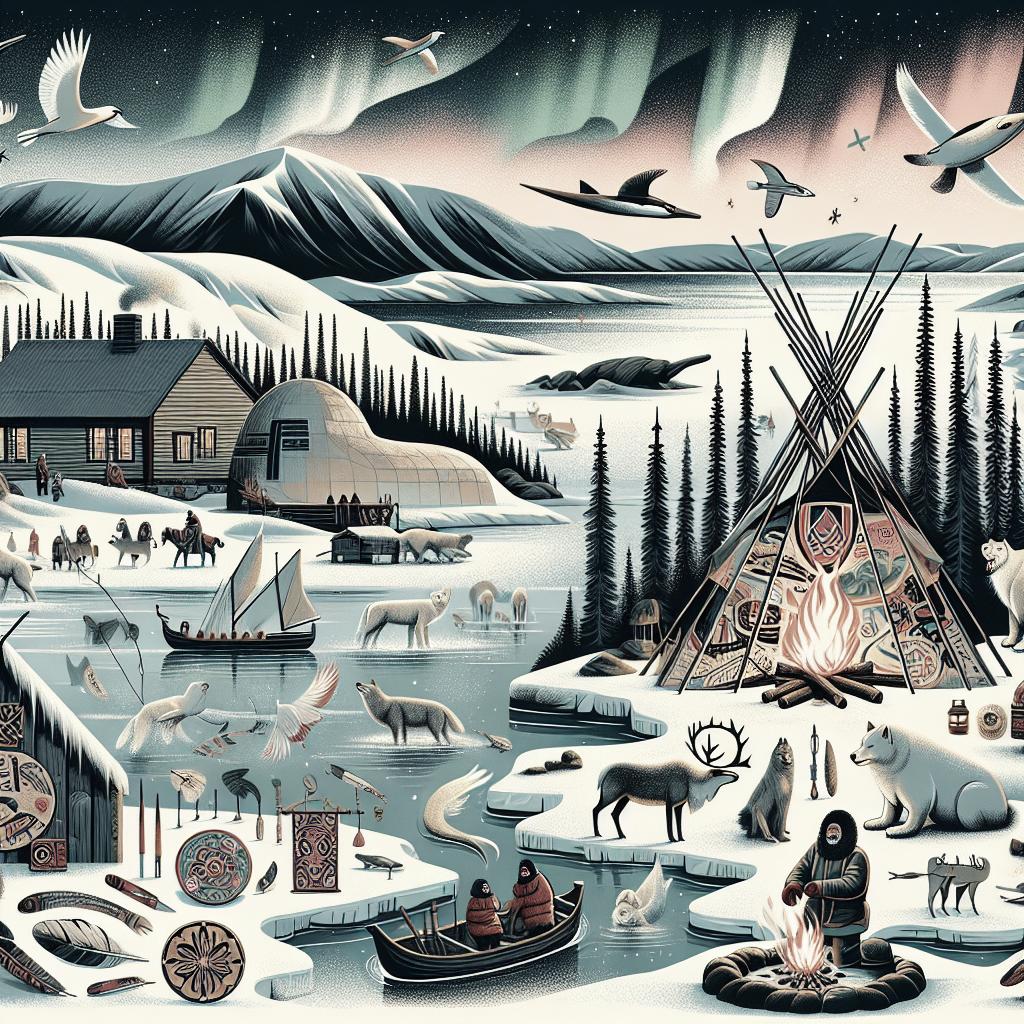“`html
The Role of Traditional Knowledge in Wildlife Management
Abstract
This article explores the evolving role of traditional knowledge in enhancing wildlife management practices, focusing on the integration of Indigenous insights with the conventional North American Model. It examines the limitations of current approaches and discusses the potential benefits of Indigenous-led conservation practices. By addressing the shortfalls and gaps, the article outlines strategies for indigenizing existing models to foster sustainable wildlife management.
Introduction
Wildlife management is a crucial aspect of environmental sustainability and biodiversity conservation. In recent years, the role of traditional knowledge, particularly Indigenous knowledge systems, has gained recognition in enhancing conservation efforts. This article examines how integrating traditional knowledge with conventional models, like the North American Model of Wildlife Conservation, can address existing gaps and foster more comprehensive wildlife management strategies.
The North American Model, a dominant framework for wildlife management, has faced criticism for its limitations, which include overlooking Indigenous perspectives. This piece delves into these criticisms, the potential role of Indigenous-led conservation, and ways to indigenize the North American Model to ensure more inclusive and effective wildlife management practices.
What is the North American Model?
The North American Model of Wildlife Conservation is a framework that emphasizes sustainable use, public trust doctrines, and scientific management for conservation. It is built upon foundational principles developed in the early 20th century aimed at conserving wildlife populations through regulated hunting and habitat preservation. This model has been instrumental in the resurgence of several wildlife species across North America.
While it has successfully rejuvenated various wildlife populations, the model primarily centers around Western scientific approaches, often overlooking the invaluable contributions of Indigenous knowledge systems. This oversight has highlighted the need for incorporating diverse perspectives in wildlife management to create more holistic and sustainable conservation policies.
Shortcomings of the Conventional North American Model
Despite its successes, the North American Model exhibits several shortcomings, particularly in addressing cultural and ecological complexities. One notable limitation is its top-down approach, which often excludes local communities and Indigenous peoples from decision-making processes. This exclusion can lead to conservation approaches that are misaligned with local ecological and cultural contexts.
Additionally, the model’s heavy reliance on Western science tends to underestimate the importance of ecosystem interdependencies and traditional ecological knowledge. By integrating Indigenous knowledge and practices, which are often adapted over centuries and are highly attuned to local ecologies, conservation efforts can become more nuanced and effective.
Gaps and Linkages between Indigenous-led Conservation and the Conventional North American Model
Indigenous-led conservation offers a path forward in filling the gaps left by conventional models. These conservation practices often involve holistic strategies, emphasizing the interconnectedness of humans, wildlife, and ecosystems. This approach is essential for addressing complex ecological challenges and achieving long-term sustainability in wildlife management.
There is significant potential for synergy between Indigenous-led conservation and the North American Model. By forging meaningful partnerships and actively involving Indigenous communities in conservation policy development, a more inclusive and effective framework can be shaped, allowing for adaptive management strategies that better reflect the realities of diverse ecosystems.
Indigenizing the North American Model of Wildlife Conservation and Management
Indigenizing the North American Model requires a paradigm shift that embraces collaborative governance and incorporates Indigenous knowledge at every level of decision-making. This transformation begins by acknowledging the rights of Indigenous peoples and their intrinsic connection to the land. Empowering Indigenous communities to play a central role in wildlife management ensures that conservation strategies are culturally relevant and ecologically sound.
Efforts to indigenize conservation involve fostering partnerships between governments, conservation organizations, and Indigenous groups, facilitating the exchange of knowledge and best practices. This can lead to the development of hybrid models that combine traditional knowledge with scientific approaches, enhancing resilience and adaptability in wildlife management.
Next Steps
To advance the integration of traditional knowledge in wildlife management, it is essential to continue building trust and cooperation among all stakeholders. Promoting education and knowledge-sharing initiatives can help bridge the knowledge gap and encourage mutual respect between Indigenous and non-Indigenous conservation practices.
By embracing a more inclusive approach to wildlife management, we can create sustainable conservation strategies that honor both cultural heritage and scientific innovation, ensuring the long-term health of ecosystems and biodiversity.
Acknowledgements
This article acknowledges the invaluable contributions of Indigenous communities across North America and worldwide, whose traditional knowledge plays a crucial role in shaping more effective wildlife conservation strategies.
Positionality Statement
The author acknowledges their position as a non-Indigenous writer and recognizes the importance of amplifying Indigenous voices in conservation discourse. This work is intended to support and highlight the contributions of Indigenous knowledge systems in wildlife management.
References
[1] Adams, W. M. (2006). The Future of Sustainability: Re-thinking Environment and Development in the Twenty-first Century. IUCN.
[2] Berkes, F. (2012). Sacred Ecology. Routledge.
Information & Authors
Information
This article was compiled using references from conservation studies and Indigenous knowledge frameworks.
Authors
Lucas Martin, a journalism graduate with a focus on environmental issues and biodiversity conservation.
Metrics & Citations
Metrics
This article has been accessed by conservationists, scholars, and policymakers aiming to incorporate traditional knowledge into wildlife management.
Citations
Adams, W. M. (2006). The Future of Sustainability: Re-thinking Environment and Development in the Twenty-first Century. IUCN.
View Options
View options
Readers can access this article in HTML, PDF, and interactive formats through various conservation and academic portals.
Get Access
Access to the full article is available through academic databases and by subscribing to relevant conservation journals.
Media
Media
Visual aids and infographics supporting the knowledge transfer between traditional and scientific conservation approaches supplement this article.
Other
Multimedia presentations and recorded seminars on Indigenous conservation practices are available for additional context.
Tables
| Section | Summary |
|---|---|
| Abstract | Explores the integration of traditional and conventional knowledge in wildlife management. |
| Introduction | Discusses the North American Model, its shortcomings, and the necessity for Indigenous inclusion in conservation. |
| Indigenizing the Model | Details strategies for incorporating Indigenous knowledge into conventional wildlife management frameworks. |
Share Options
Share
Readers are encouraged to share this article via social media platforms, academic networks, and conservation forums to promote awareness and discussion on integrating traditional knowledge in wildlife management.
“`

